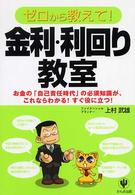- ホーム
- > 洋書
- > 英文書
- > Science / Mathematics
Full Description
Decades of research reveal that human error is a significant contributor to vehicle crashes, accounting for over 90 % of incidents. Humans possess inherent physical, visual, and cognitive limitations that can lead to accidents on the road. This book draws on the author's 35 years of experience investigating approximately 500 motor vehicle crashes to explore these limitations and their role in causing accidents.
In this title, ten specific crashes, each illustrating how human limitations contribute to accidents, are presented and analyzed. Technical solutions such as automated emergency braking are offered for each crash type. From passenger car drivers to pedestrians, motorcyclists to truck drivers, each chapter investigates the unique circumstances and human factors at play. In each case, the interdisciplinary science of human factors that applies is explained, covering issues such as visibility with low beam headlights, glare, fatigue, information processing demands, and false expectations. Including a final chapter on the author's experiences acting as a human factors expert witness in court, this book delivers to the reader a vital overview of human error in vehicle accidents.
Investigating How and Why Motor Vehicle Crashes Occur: To Err Is Human is an essential read for practitioners of human factors and ergonomics, occupational health and safety, automotive engineering, civil engineering, road and transport design, collision investigation and the law.
Contents
1. Introduction. 2. Pedestrian Lying on the Road. 3. Red-Light Runner. 4. Motorcycle vs Train. 5. Eyewitness Evidence. 6. Pedestrian Struck on Signal Change. 7. Disabled Car on Highway versus Tractor Trailer. 8. Bus versus Train - Fatigue? 9. Car versus Tractor. 10. Workzone crash. 11. Car versus Bicycle. 12. Acting as a human factors expert witness.








